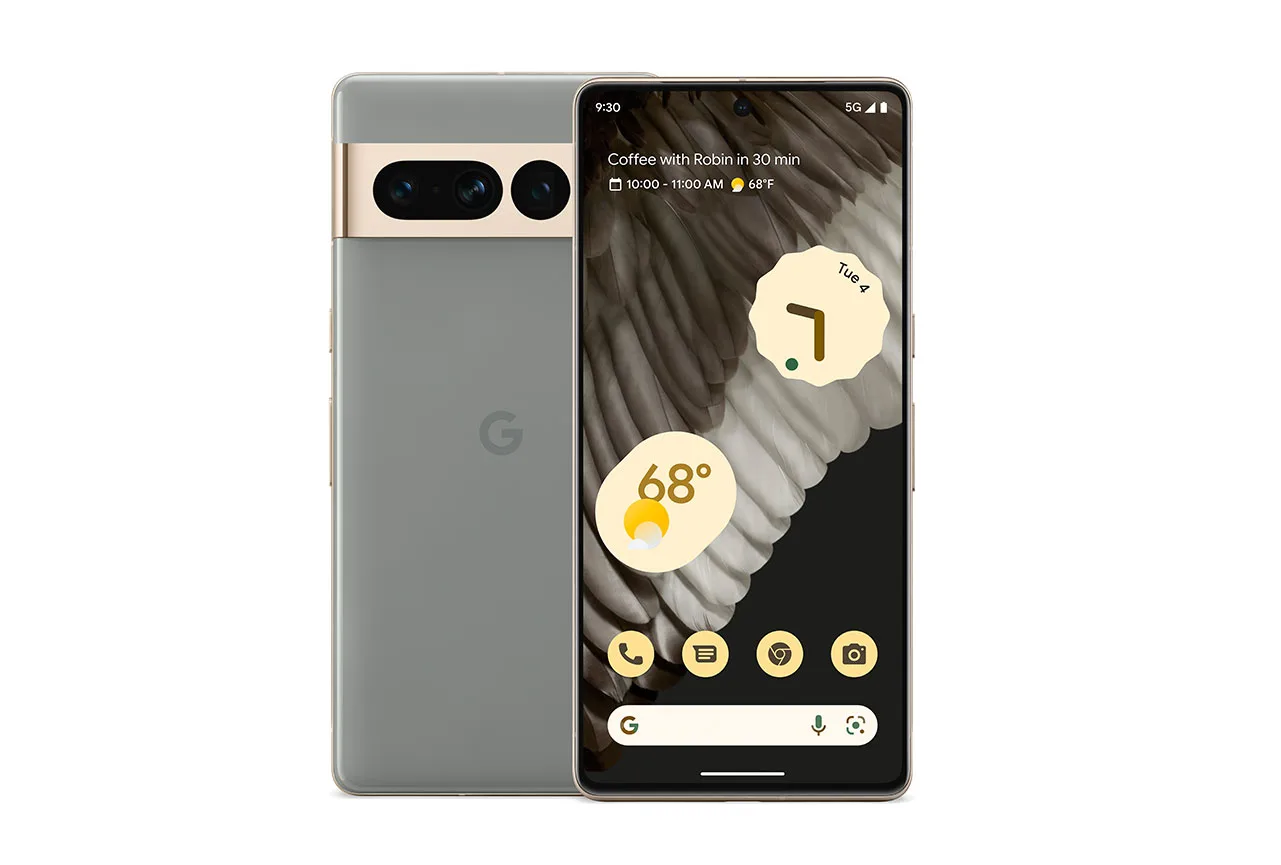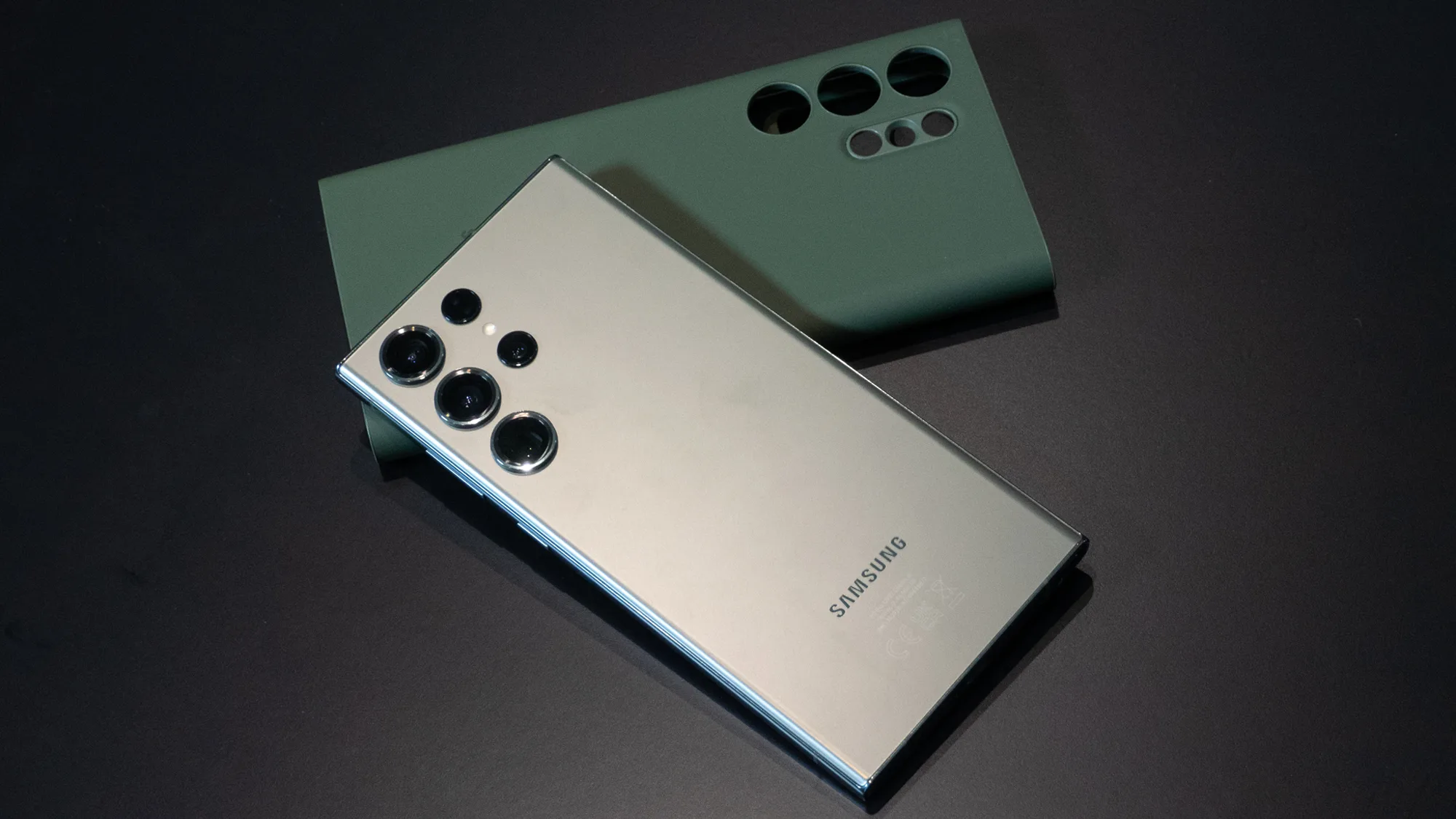When it comes to choosing a flagship smartphone, the market is flooded with options. Two of the leading contenders in the high-end smartphone arena are the Google Pixel 7 Pro and the Samsung Galaxy S23 Ultra. Both phones offer a range of impressive features, but they also have their own unique characteristics that set them apart. In this detailed comparison, we’ll explore these two smartphones across all major parameters to help you make an informed decision.
| Specification | Google Pixel 7 Pro | Samsung Galaxy S23 Ultra |
| Design and Build | ||
| Dimensions | 162.9 x 76.6 x 8.9 mm | 163.4 x 78.1 x 8.9 mm |
| Weight | 212 g | 234 g |
| Build Materials | Glass front and back (Gorilla Glass Victus) with aluminum frame |
Glass front and back (Gorilla Glass Victus 2) with Armor aluminum frame
|
| SIM Support | Nano-SIM and eSIM |
Nano-SIM and eSIM or Dual SIM
|
| Display | LTPO AMOLED, 6.7 inches, 1440 x 3120 pixels, HDR10+, 1000 nits (HBM), 1500 nits (peak), Corning Gorilla Glass Victus |
Dynamic AMOLED 2X, 6.8 inches, 1440 x 3088 pixels, HDR10+, 1200 nits (HBM), 1750 nits (peak), Corning Gorilla Glass Victus 2
|
| IP Rating | IP68 dust and water-resistant |
IP68 dust and water-resistant
|
| Performance | ||
| Operating System | Android 13 |
Android 13 with Samsung One UI 5.1
|
| Chipset and CPU | Google Tensor G2 (Octa-core: 1×2.80 GHz Cortex-X2, 3×2.25 GHz Cortex-A710, 4×1.80 GHz Cortex-A510) |
Qualcomm Snapdragon 8 Gen 2 (Octa-core: 1×3.09 GHz Kryo 780, 3×2.42 GHz Kryo 780, 4×1.80 GHz Kryo 780)
|
| GPU | Adreno 730 | Adreno 780 |
| RAM | 8GB | 12GB, 16GB |
| Storage Options | 128GB, 256GB | 128GB, 256GB, 512GB |
| Camera | ||
| Main Camera Specifications | Triple Camera Setup | Quad Camera Setup |
| Main Camera | 50 MP, f/1.7 (wide) | 108 MP, f/1.8 (wide) |
| Telephoto Camera | 12 MP, f/1.7 (telephoto, 2x optical zoom) |
12 MP, f/2.0 (telephoto, 3x optical zoom)
|
| Ultrawide Camera | 12 MP, f/2.2 (ultrawide) | 12 MP, f/1.8 (ultrawide) |
| Additional Cameras | – | 2 MP, f/2.4 (depth) |
| Zoom Capabilities | Super Res Zoom | 100x digital zoom |
| Video Recording | 4K at up to 60fps | 8K at up to 30fps |
| Selfie Camera | 12 MP, f/2.4 (ultrawide) | 40 MP, f/2.2 (wide) |
| Battery Life | ||
| Battery Type | Li-Po 4600 mAh (non-removable) |
Li-Ion 5000 mAh (non-removable)
|
| Charging Speed | 30W fast charging (50% in 30 minutes, claimed) |
45W fast charging (50% in 30 minutes, claimed)
|
| Connectivity and Other Features | ||
| Wireless Connectivity | 5G | 5G |
| Ports and IR Port | USB Type-C | USB Type-C |
| Additional Features | Stereo speakers, Active Edge, Titan M2 security chip, Google Assistant |
S Pen support, stereo speakers, Samsung DeX
|
| Price and Value | ||
| Price (Starting) | ₹68,500 | ₹102,990 |
Now, let’s dive into the detailed comparison of the Google Pixel 7 Pro and the Samsung Galaxy S23 Ultra.
1. Introduction
Background Information:
Google Pixel 7 Pro:

Announced in October 2022 and released the same month, the Google Pixel 7 Pro is one of Google’s flagship smartphones. It comes with the latest Android 13 operating system and is powered by the Google Tensor G2 chipset.
Samsung Galaxy S23 Ultra:

Announced in February 2023 and released later the same month, the Samsung Galaxy S23 Ultra is the latest addition to Samsung’s Galaxy S series. It runs on Android 13 with Samsung’s One UI 5.1 and features the Qualcomm Snapdragon 8 Gen 2 chipset.1
1. Price and Availability:
– Google Pixel 7 Pro: Starting at ₹68,500
– Samsung Galaxy S23 Ultra: Starting at ₹102,990
Now, let’s delve into a detailed comparison of these two flagship smartphones.
2. Design and Build
Dimensions and Weight:
Google Pixel 7 Pro:
– Dimensions: 162.9 x 76.6 x 8.9 mm
– Weight: 212 g
Samsung Galaxy S23 Ultra:
– Dimensions: 163.4 x 78.1 x 8.9 mm
– Weight: 234 g
3. Build Materials:
Google Pixel 7 Pro: It features a glass front (Gorilla Glass Victus) and a glass back (Gorilla Glass Victus) with an aluminum frame.
Samsung Galaxy S23 Ultra: It also sports a glass front (Gorilla Glass Victus 2) and a glass back (Gorilla Glass Victus 2) but with an aluminum frame. Additionally, it offers Armor aluminum frame with tougher drop and scratch resistance.
4. SIM Support:
Google Pixel 7 Pro: Supports Nano-SIM and eSIM.
Samsung Galaxy S23 Ultra: Supports Nano-SIM and eSIM or Dual SIM (2 Nano-SIMs and eSIM, dual stand-by).
5. Display:
– Google Pixel 7 Pro:
– Type: LTPO AMOLED
– Size: 6.7 inches
– Resolution: 1440 x 3120 pixels
– Features: HDR10+, 1000 nits (HBM), 1500 nits (peak), Corning Gorilla Glass Victus
– Samsung Galaxy S23 Ultra:
– Type: Dynamic AMOLED 2X
– Size: 6.8 inches
– Resolution: 1440 x 3088 pixels
– Features: HDR10+, 1200 nits (HBM), 1750 nits (peak), Corning Gorilla Glass Victus 2
6. IP Rating:
Both smartphones are IP68 dust and water-resistant, with the capability to withstand submersion in up to 1.5 meters of water for 30 minutes.
In terms of design and build, the Samsung Galaxy S23 Ultra is slightly larger and heavier than the Google Pixel 7 Pro. Both phones offer premium build materials with glass fronts and backs, along with aluminum frames. The Galaxy S23 Ultra boasts enhanced durability with its Armor aluminum frame and Gorilla Glass Victus 2.
7. Performance
Operating System:
– Google Pixel 7 Pro: Runs on Android 13.
– Samsung Galaxy S23 Ultra: Also runs on Android 13 but with Samsung’s One UI 5.1 skin.
Chipset and CPU:
– Google Pixel 7 Pro: Powered by the Google Tensor G2 chipset, featuring an Octa-core
(1×2.80 GHz Cortex-X2 & 3×2.25 GHz Cortex-A710 & 4×1.80 GHz Cortex-A510) CPU.
– Samsung Galaxy S23 Ultra: Equipped with the Qualcomm Snapdragon 8 Gen 2 chipset, featuring an Octa-core (1×3.09 GHz Kryo 780 & 3×2.42 GHz Kryo 780 & 4×1.80 GHz Kryo 780) CPU.
GPU:
– Google Pixel 7 Pro: Adreno 730 GPU.
– Samsung Galaxy S23 Ultra: Adreno 780 GPU.
RAM and Storage:
– Google Pixel 7 Pro:
– RAM: 8GB
– Storage Options: 128GB, 256GB
– Samsung Galaxy S23 Ultra:
– RAM: 12GB, 16GB
– Storage Options: 128GB, 256GB, 512GB
In terms of performance, the Samsung Galaxy S23 Ultra has a slight edge with its more powerful Qualcomm Snapdragon 8 Gen 2 chipset and the option for higher RAM configurations. However, both phones should provide excellent performance for demanding tasks and gaming.
8. Camera
Main Camera Specifications:
– Google Pixel 7 Pro:
– Triple Camera Setup
– 50 MP, f/1.7, 24mm (wide), PDAF, OIS
– 12 MP, f/1.7, 50mm (telephoto), PDAF, 2x optical zoom, OIS
– 12 MP, f/2.2, 120˚, 16mm (ultrawide)
– Features: Pixel Shift, Night Sight, Super Res Zoom, 4K video recording at up to 60fps
– Samsung Galaxy S23 Ultra:
– Quad Camera Setup
– 108 MP, f/1.8, 24mm (wide), PDAF, OIS
– 12 MP, f/2.0, 70mm (telephoto), PDAF, 3x optical zoom, OIS
– 12 MP, f/1.8, 120˚, 13mm (ultrawide)
– 2 MP, f/2.4, (depth)
– Features: Laser autofocus, 100x digital zoom, 8K video recording at up to 30fps
Camera Features:
– Google Pixel 7 Pro: Google’s Pixel camera technology is known for its exceptional computational photography, including features like Night Sight for low-light photography and Super Res Zoom for sharp digital zoom images.
– Samsung Galaxy S23 Ultra: Offers impressive zoom capabilities with 100x digital zoom and 10x optical zoom. It also features laser autofocus for faster and more accurate focusing.
Video Recording:
– Both phones support 4K video recording, but the Samsung Galaxy S23 Ultra takes it a step further with 8K video recording capabilities.
Selfie Camera:
– Google Pixel 7 Pro: 12 MP, f/2.4, 16mm (ultrawide) front camera with features like Night Sight and Super Res Zoom.
– Samsung Galaxy S23 Ultra: 40 MP, f/2.2, 26mm (wide) front camera.
In terms of camera capabilities, the Samsung Galaxy S23 Ultra offers a more versatile camera setup with its 108 MP main sensor and impressive zoom capabilities. However, the Google Pixel 7 Pro is known for its exceptional computational photography, which can produce stunning results in various lighting conditions.
9. Battery Life
Battery Type:
– Google Pixel 7 Pro: Li-Po 4600 mAh, non-removable battery.
– Samsung Galaxy S23 Ultra: Li-Ion 5000 mAh, non-removable battery.
Charging Speed:
– Google Pixel 7 Pro: 30W fast charging, 50% charge in 30 minutes (claimed).
– Samsung Galaxy S23 Ultra: 45W fast charging, 50% charge in 30 minutes (claimed).
Both phones offer fast charging capabilities, with the Samsung Galaxy S23 Ultra having a slight advantage in terms of charging speed and a slightly larger battery capacity.
10. Connectivity and Other Features
Wireless Connectivity:
– Both phones support 5G connectivity for faster download and streaming speeds.
Ports and IR Port:
– Both phones feature USB Type-C ports for charging and data transfer.
– Neither phone includes an IR (infrared) port.
Additional Features:
– Google Pixel 7 Pro: Features stereo speakers, Active Edge for squeezing the phone to trigger actions, Titan M2 security chip, and Google’s suite of software enhancements, including Google Assistant.
– Samsung Galaxy S23 Ultra: Offers an S Pen slot for stylus support, stereo speakers, and a range of Samsung-specific features, including Samsung DeX for desktop-like productivity.
11. Price and Value
Price Comparison:
– Google Pixel 7 Pro: Starting at ₹68,500
– Samsung Galaxy S23 Ultra: Starting at ₹102,990
The Google Pixel 7 Pro is notably more affordable than the Samsung Galaxy S23 Ultra, which is a premium flagship device with a higher price tag. When considering value for money, the Pixel 7 Pro offers a compelling package with impressive camera capabilities and the latest Android experience. However, the Galaxy S23 Ultra’s additional features, powerful performance, and camera versatility may justify its higher cost for some users.
12. Conclusion
In this comprehensive comparison, we’ve examined the key aspects of the Google Pixel 7 Pro and the Samsung Galaxy S23 Ultra. Both phones are formidable flagship devices with their own strengths.
Choose the Google Pixel 7 Pro if:
– You prioritize computational photography and exceptional image processing.
– You prefer the stock Android experience.
– You are looking for a more budget-friendly option.
Choose the Samsung Galaxy S23 Ultra if:
– You need a versatile camera system with impressive zoom capabilities.
– You want the latest Snapdragon chipset and higher RAM options.
– You value additional features like stylus support and Samsung DeX.
Ultimately, the choice between these two smartphones depends on your specific preferences, budget, and how you prioritize different features and capabilities. Consider your needs carefully to make the best decision for your smartphone upgrade.
